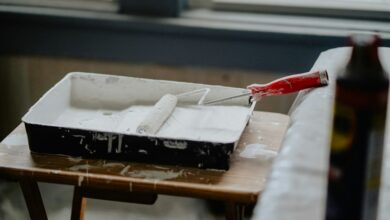Top 5 Methods For Effective Basement Crack Repairs

Basements, the foundation of our homes, often go unnoticed until a problem arises. One of the most common issues that homeowners encounter is basement cracks. This seemingly notorious problem can range from harmless hairline cracks to more expansive and concerning structural splits. While the sight of a crack can stress some homeowners, it’s essential to understand that modern technology and techniques can effectively address most basement cracks. However, the key lies in understanding the nature of the crack and selecting the appropriate repair method. Basement crack repair has evolved over the years. Today, homeowners have many options designed to tackle specific cracks and conditions. This guide explores the top five methods for effective basement crack repairs, providing insights and recommendations to help homeowners make informed decisions.
Epoxy Crack Injection
Epoxy crack injection remains one of the most popular methods for basement crack repairs, particularly for non-moving or static cracks. Its high adhesive strength can restore the concrete’s original integrity, bonding the crack securely. The process involves cleaning the crack and its surrounding area and applying the epoxy. Once injected, it penetrates the cracks and binds the sides of the crack. The cured epoxy is typically more robust than the surrounding concrete, ensuring a durable and long-lasting repair. However, its rigidity can sometimes be its downfall. Epoxy may not be ideal for active cracks that continue to shift or expand. Understanding the nature of your basement crack is core to determining if epoxy injection is the right solution.
Polyurethane Foam Injection
This is another effective basement crack repair method that gives epoxy injection competition. For active or moving cracks, polyurethane foam injection offers a flexible solution. Unlike rigid epoxy, polyurethane can accommodate minor movements and shifts, ensuring the repair’s longevity. The injected foam expands in the crack, filling even the smallest spaces and ensuring a watertight seal. This method is especially effective for cracks that might be subjected to moisture or water ingress, as the foam prevents seepage. Its flexibility and adaptability make polyurethane foam injection a preferred choice for many homeowners with expanding or shifting cracks.
Hydraulic Cement Patching
The hydraulic cement patching is a concrete crack repair method that involves using fast-setting cement to patch up cracks. The rapid setting nature of hydraulic cement ensures that it sets even in the presence of moisture, making it a reliable choice for wet basements. Before applying, cleaning the crack and removing any loose material is crucial. Once the area is prepped, the cement is pressed into the crack. As it sets, it expands, ensuring a tight seal. Though effective, this method might not be ideal for larger, more extensive cracks or those resulting from structural issues. It’s best suited for minor cracks and seepage points.
Carbon Fiber Straps
This method comes into place when struggling with significant structural issues causing cracks. Carbon fiber straps offer a modern and robust solution for foundation crack repairs. These straps are made from high-strength carbon fiber that is adhered to the wall using industrial-strength epoxy. The straps act as a brace, distributing tension and preventing the crack from widening or shifting. Given their strength, carbon fiber straps are particularly effective for horizontal cracks, which often signal more severe foundational issues. The application process is relatively non-invasive, making it a preferred choice for many homeowners. The simple nature of this method also ensures that the straps can be easily concealed or painted over.
Application Of Waterproofing Membrane
Applying a waterproofing membrane can address the root cause of many basement cracks. Waterproofing membranes are durable plastic or rubber sheets applied to the basement’s exterior walls. This method involves excavating the area around the affected basement wall, cleaning it, and applying the membrane. The membrane is a barrier, preventing moisture and water from penetrating the basement walls. By tackling the issue at the source, waterproofing membranes ensure that water pressure and seepage don’t contribute to further crack development. This method often goes hand in hand with other concerete crack repair techniques, ensuring a comprehensive solution.
Conclusion
Basements go beyond just being a foundational aspect of our homes but a room vital in nature. The basemen is, in fact, the bedrock upon which our homes and lives are built. Ensuring their stability and health directly impacts the homeowners’ personal health and safety, home value, and longevity. The methods outlined in this guide provide homeowners with effective techniques to combat and remedy basement cracks. But the process doesn’t end with the repair. A smart approach that involves homeowners’ anticipation of basement cracks can reduce the need for repairs in the first place. While epoxy crack injections and carbon fiber straps provide excellent remedies, integrating preventive strategies, like drainage and waterproofing, is vital. The combined approach ensures an intelligent solution, addressing basement leakages’ symptoms and root causes.



